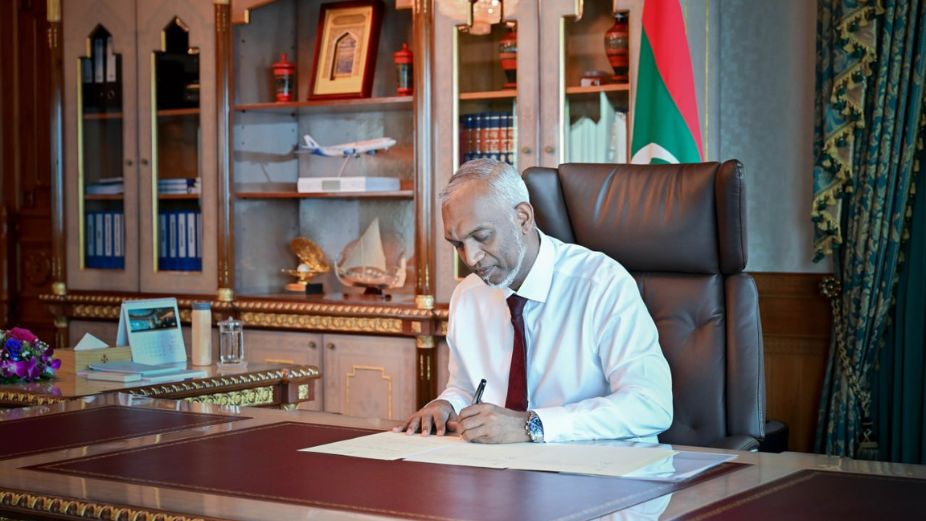
President Dr Mohamed Muizzu’s decision to dissolve the Environmental Protection Agency (EPA) and reconstitute it as the Environmental Regulatory Authority (ERA) under the direct control of the Ministry of Tourism and Environment has triggered a national debate over environmental governance and institutional independence.
The change, enacted through Presidential Directive No. 14/2025, ends the EPA’s semi-independent status under a governing board. The ERA will now be headed by a chief administrator, a civil service position, and operate entirely within ministerial oversight. According to the President’s Office, the shift is intended to align the agency’s name more closely with its core regulatory functions and to “strengthen and expedite” operations.
However, the restructuring also changes how Environmental Impact Assessments (EIAs) are handled. Applications for EIAs must now be submitted to a party designated by the ministry or the Minister for Tourism and Environment. For projects deemed “priority government projects” by the minister, work leading up to the EIA stage must be expedited, with cabinet approval required for such designations.
Environmental advocates have raised concerns that these changes could reduce scrutiny of major development projects. Ibrahim Naeem, the long-serving director general of the EPA, said the agency’s independence has always been limited by the priorities of the administration in power. He stressed that EIAs are not a procedural formality but essential for understanding the state of a site and identifying measures to protect ecosystems.
Prominent opposition figures, including former president Mohamed Nasheed, have criticised the move. Nasheed argued that operational independence is essential for credibility in environmental policy and called placing the authority under the tourism ministry “misguided.” Maldivian Democratic Party (MDP) leader Fayyaz Ismail described the change as “a major step backward” for environmental protection, warning of broader impacts on regulatory checks and investor confidence. MDP president Abdulla Shahid said the decision undermines decades of work on climate change and environmental diplomacy.
The EPA was established in 2008 to consolidate environmental research, regulation, and enforcement functions. Critics fear that the new structure could make it easier to push forward infrastructure and tourism projects without adequate environmental safeguards, while supporters of the change argue it will streamline operations and strengthen regulatory capacity.
With the ERA now positioned directly under ministerial control, the extent to which it can independently enforce environmental regulations will likely depend on the government’s policy priorities and its commitment to balancing development with environmental stewardship.













